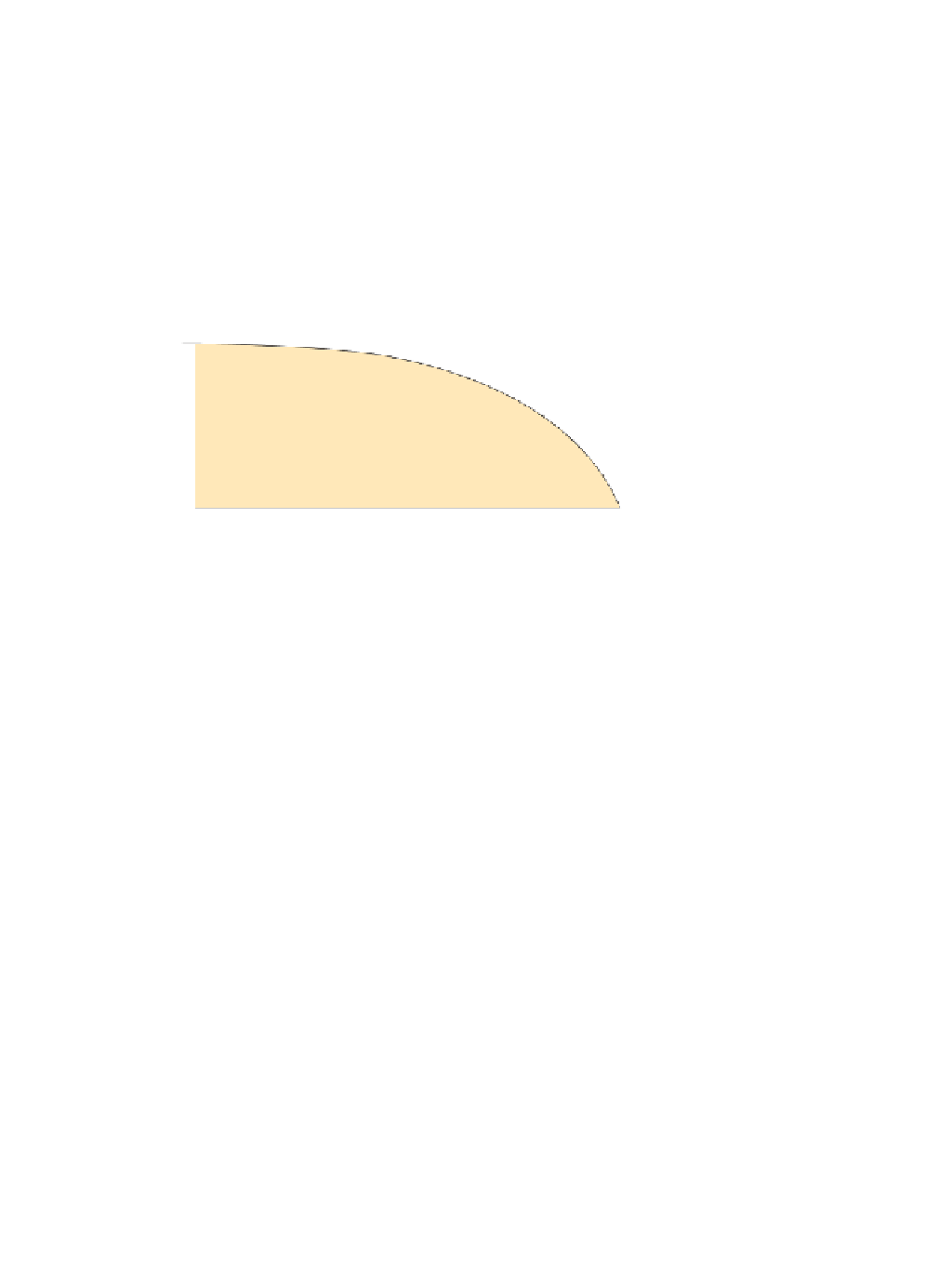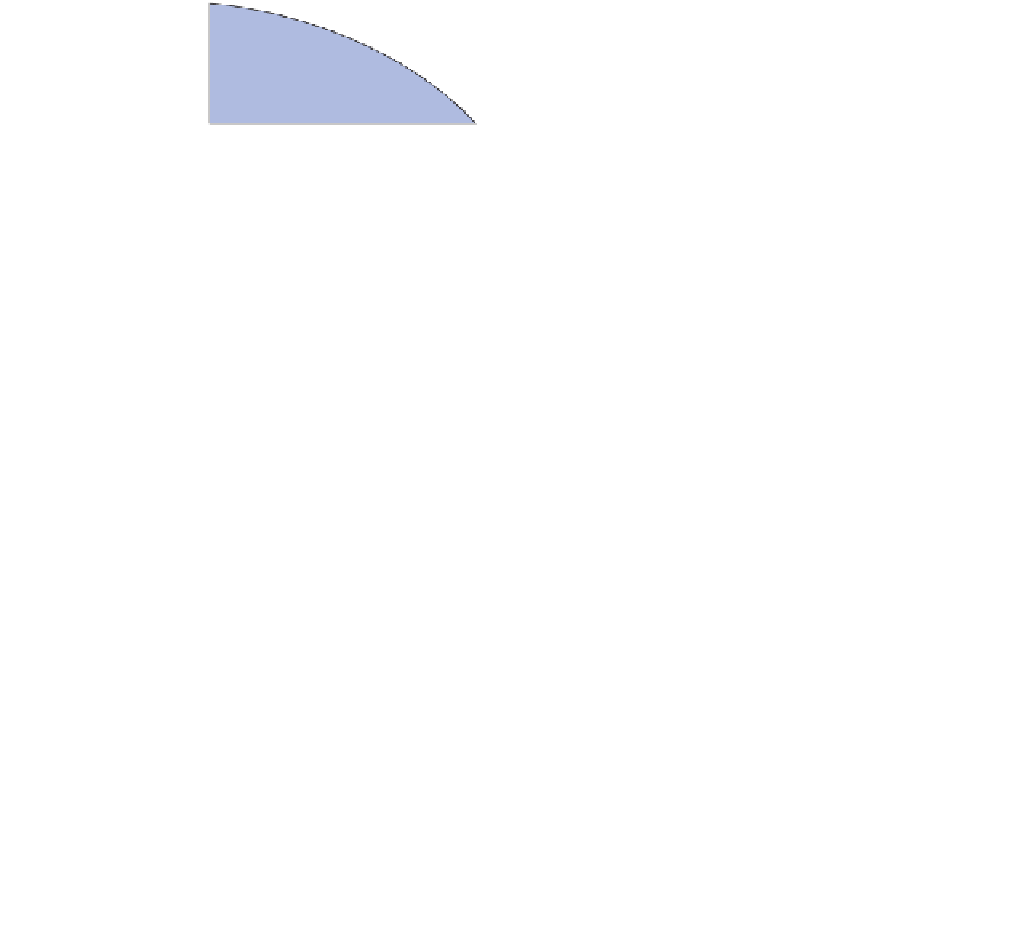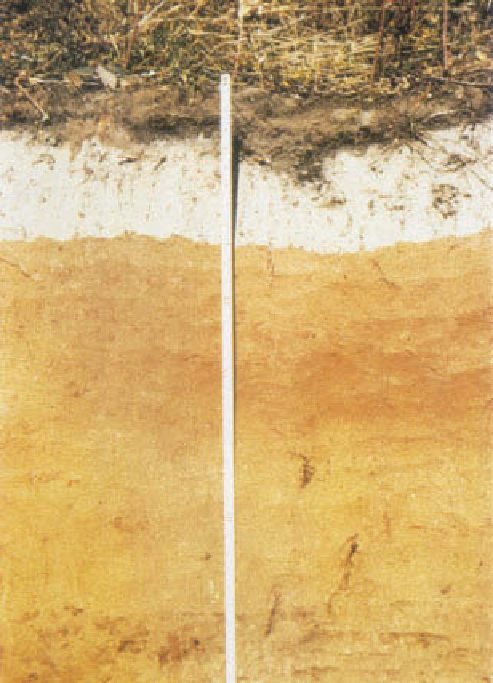Geoscience Reference
In-Depth Information
INCREASING PRECIPITATION
South
North
Soil names
FAO
CHERNOZEMIC SOILS
LUVISOLIC SOILS
Dark
brown
Dark
grey
Canadian
Brown
Black
Grey wooded soil
cm
HUMUS
HORIZONS
30
60
Calcium
Carbonate
CaCO
3
90
Gypsum
CaSO
4
.2H
2
O
120
Figure 18.7
Lime and gypsum horizons of deposition in a transect of increasing precipitation from south to north in the
Canadian prairies.
expect, the most distinctive podzol profiles are found
where drainage is good and the parent material is acid, as
on acid igneous and metamorphic rocks, sandstones and
depositional acid sands.
Most soil classifications recognize different types of
podzol, depending on local conditions (
Figure 18.8
).
The
typical humo-ferric podzol (FAO: Orthic Podzol) has
accumulations of organic material (Bh or Bhs) overlying
the horizon of iron accumulation (Bs) (
Plate 18.10
).
This
is the normal profile found under coniferous and mixed
forest in Russia and North America where the parent
materials have a moderate content iron content. They are
common on coarse, non-calcareous rocks or on superficial
materials like glacial tills from which free lime has been
removed. By contrast, humus podzols have well developed
Bh horizons but lack any horizon of iron accumulation.
They form under cool, moist conditions, usually on parent
materials with a low iron content (
Plate 18.1
).
Plate 18.9
Iron Podzol (FAO: Ferric Podzol) in fluvio-glacial
sands beneath white spruce in the Canadian boreal forest.
eluvial horizon (Ea) and the orange-brown illuvial horizon (Bs).
Photo: Ken Atkinson





























































